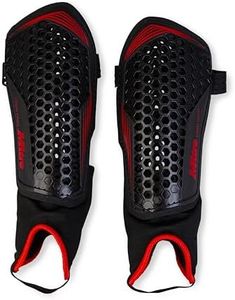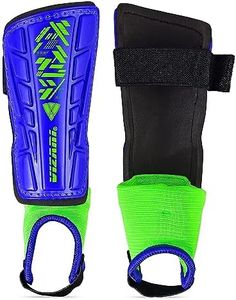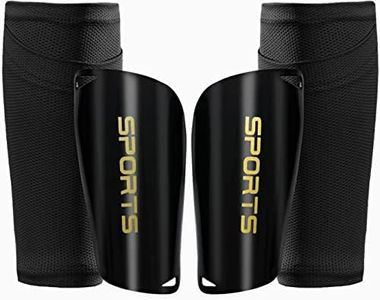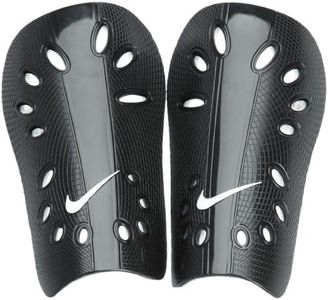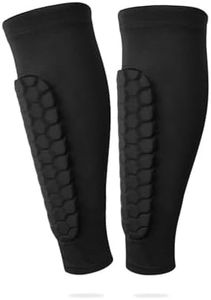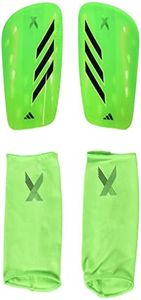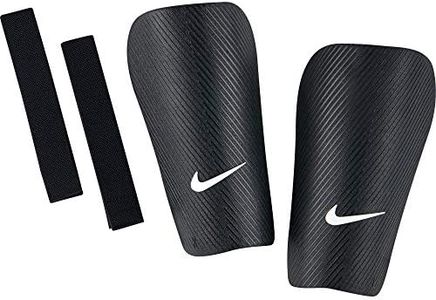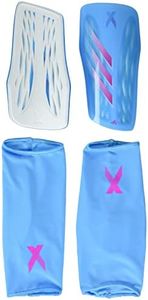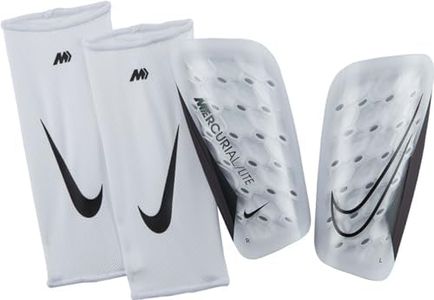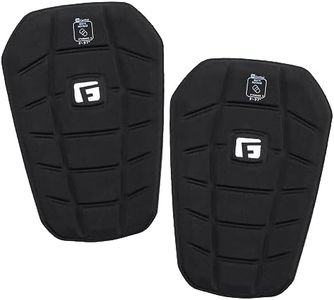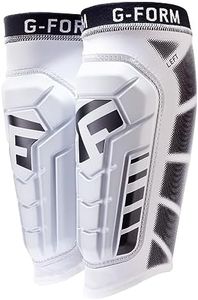We Use CookiesWe use cookies to enhance the security, performance,
functionality and for analytical and promotional activities. By continuing to browse this site you
are agreeing to our privacy policy
10 Best Soccer Shin Guards
From leading brands and best sellers available on the web.By clicking on a link to a third party's website, log data is shared with that third party.
Buying Guide for the Best Soccer Shin Guards
Choosing the right soccer shin guards is important for both protection and comfort while playing. The main goal is to keep your shins safe from kicks and impacts without limiting your movement. When shopping for shin guards, you’ll notice different shapes, sizes, and features. It’s important to consider your playing position, how much protection you need, and how comfortable the guards feel while wearing them. Pay close attention to how they fit and how easy they are to put on and take off, as these factors will affect your overall playing experience.SizeSize tells you how well the shin guard will fit your leg. Wearing the correct size is important for both protection and comfort—the guard should cover most of your shin without restricting your knees or ankles. Sizes usually depend on your height and leg length. Small sizes are best for younger players and those with shorter legs, while larger sizes suit taller athletes. Always check the sizing chart provided by the manufacturer, and make sure the guards reach from just below your knee to about an inch above your ankle. Trying them on or measuring your shin can help you find the best fit for your needs.
Type (Slip-In vs. Ankle Guards)The type refers to how the shin guard is worn and if it includes extra ankle protection. Slip-in shin guards are lightweight plates that slide under your socks, allowing for more freedom of movement and are loved by experienced or attacking players who prioritize speed. Ankle-guard models add extra padding around your ankles and sometimes have stirrups, which are great for defensive players or beginners who want more protection. Think about your playing style and position—choose ankle guards for more safety or slip-ins if you want to feel less bulky and move faster.
Padding and Protection LevelPadding is the amount of cushioning and material that absorbs impact when you get kicked or hit on the shin. More padding means greater protection but also more bulk. Lighter padding is often found in slip-in guards, which provides basic protection for players who are less likely to get heavy contact, like forwards. Heavier padding, often paired with ankle guards, is useful for defensive players or those who play in physical matches. Consider how often and how hard you're likely to get tackled to decide how much protection you really need.
Strap System and FitThe strap system is how the shin guard stays attached to your leg. Some have built-in straps or Velcro, while others simply rely on your soccer socks to keep them in place. Straps can help stop the guard from slipping during play and ensure a snug fit. For younger or more active players, a secure strap system may be a good choice, while more advanced players may prefer minimal straps for better movement. Make sure any straps don't rub or cause discomfort.
MaterialThe material of the shin guard covers what it's made from—typically plastic, fiberglass, or foam. Plastics and fiberglass offer strong protection from high impacts, while foam is softer and lighter but less protective. Higher levels of competition or older players might prefer firmer and more durable materials, while beginners or casual players might select lighter foam guards that are easy to wear and adjust. Consider how intense your matches are and choose a material that balances safety and comfort for your level of play.
VentilationVentilation is the guard's ability to allow air flow, keeping your legs cool and sweat-free. Some shin guards have small holes or mesh to improve breathability. Good ventilation is important for comfort, especially during longer matches or in hot weather. Players who sweat a lot or play in warm conditions should look for shin guards with added ventilation to avoid irritation and keep fresh throughout play.
